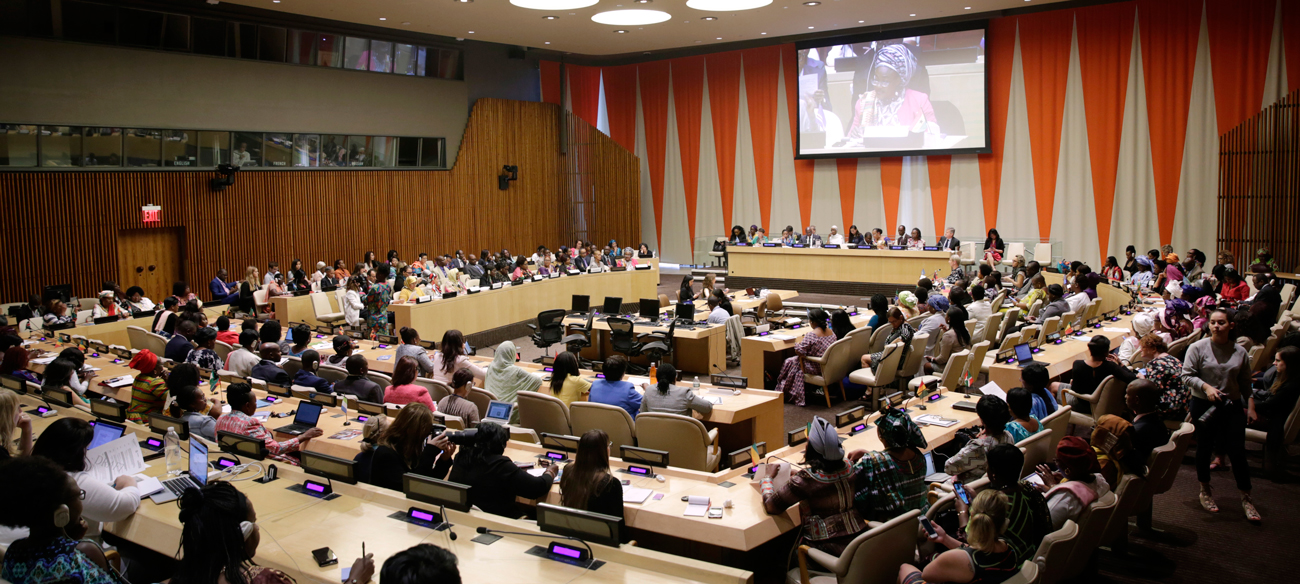Broadening Participation in Political Negotiations
Political, social, and economic exclusion is a major driver of conflict. Structured participation of actors beyond the principal conflict parties in peace and political transition processes is becoming an ever more popular approach to address armed conflicts and build sustainable peace. But who is included, how, where, and when, are all decisions that impact on the power dynamics that will determine the shape of a country’s political, social, and economic landscape.
The research project Broadening Participation in Political Negotiations and Implementation (2010–2017) focused on inclusion in peace processes and political transitions. It explored the kinds of actors included in a range of cases of peace negotiation and political transition, the mechanisms and circumstances of their inclusion, and their ability to influence these processes.
Research objective
The overall research objective was to establish how and under what conditions various actors may participate in and/or influence complex peacemaking and political transition processes, across all phases of the process from pre-negotiation to negotiations to the implementation of agreements.
Methodology
The Broadening Participation project built a qualitative dataset of 40 case studies of multi-stakeholder negotiations within peace and transition processes, covering 34 countries and ranging from 1989 to 2014.
The first phase of the project (2011–12) found that inclusion may take place across multiple levels and modes of interaction. Derived from empirical cases, this preliminary research identified and described a broad variety of common inclusion modalities.
The second phase of the project (2013–14) applied a comparative framework to analyse the functioning of the inclusion modalities. The case study analysis focused on: why inclusive processes were conducted; the contributions made by included actors across modalities and over time (across process phases); and the factors which affected actors’ ability to make contributions.
The third phase of the project (2014–17) analysed collected data by applying both qualitative and quantitative research methodologies. The project also investigated new cases.
Key findings
- Inclusion does not only happen at the negotiation table – different phases and locations also matter. The modalities of inclusion are: direct representation at the negotiation table; observer status; consultations; inclusive commissions; high-level problem-solving workshops (track 1.5); public decision-making; mass action.
- Increasing the number of included groups does not matter per se; it is the quality of influence that matters.
- The motivation for broader inclusion is often pragmatic or strategic, rather than normative.
- The involvement of women’s groups, when they were influential, was strongly correlated with successful negotiation and implementation.
- Factors that related to the process and determined the level of influence include the existence of strong coalitions, decision-making procedures, selection criteria and procedures, transfer strategies used by groups to ensure their inputs reach the negotiation table, attitude of mediators, and support structures for participants.
- Factors that related to the context and determined the level of influence include elite resistance, regional and geopolitical context, and public buy-in.
List of case studies
- Aceh (Peace Negotiation 1999–2003)
- Afghanistan (Negotiations and Political Transition 2001–2005)
- Benin (Political transition 1990–2011)
- Burundi (Peace negotiations and implementation 1996–2013)
- Colombia (Peace Negotiations 1998–2002)
- Cyprus (Negotiations 1999–2004)
- Darfur (Peace Negotiations 2009–2013)
- DR Congo (Inter-Congolese Dialogue 1999–2003)
- Egypt (Political Transition 2011–2013)
- El Salvador (Peace Neg. and Impl. 1990–1994)
- Eritrea (Constitution Making 1993–1997)
- Fiji (Political Transition/Constitution making 2006–2013)
- Georgia-Abkhazia (UN Negotiations 1997–2007)
- Guatemala (Peace process 1989–1999)
- Israel-Palestine (Geneva Initiative 2003–2013)
- Israel-Palestine (Oslo I 1991–1995)
- Kenya (Post-election violence 2008–2013)
- Kyrgyzstan (Political reforms 2013 – present)
- Liberia (Peace Agreement and Implementation 2003–2011)
- Macedonia (Ohrid FA Peace Process 2001–2013)
- Mali (Political Transition 1990–1992)
- Northern Mali (Peace negotiation 1990–1996)
- Mexico (Chiapas uprising and peace process 1994–1997)
- Moldova-Transnistria (Negotiations 1992–2005)
- Nepal (Peace Agreement and Constitution making 2005–2012)
- Northern Ireland (Good Friday 2001–2013)
- Papua New Guinea (Bougainville Peace Negotiations 1997–2005)
- Rwanda (Arusha Peace Accords 1992–1993)
- Solomon Islands (Townsville Peace Agreement and Constitution Making 2000–2014)
- Somalia (National Peace Conference 1992–1994)
- Somalia (National Peace Conference 2001–2005)
- Somalia (Djibouti process 1999–2001)
- Somaliland (Post-independence violence negotiations 1991–1994)
- South Africa (Political Transition 1990–1997)
- Sri Lanka (Ceasefire, Peace Negotıatıon and Elections 2000–2004)
- Tajikistan (Peace negotiations and impl.1993–2000)
- Togo (Political transition 1990–2006)
- Turkey Armenia Protocols 2008–2011)
- Turkish-Kurdish (Peace Process 2009–2014)
- Yemen (National Dialogue 2011–2014)
Briefing Note,
Can Inclusive Peace Processes Work? New Evidence From a Multi-Year Research Project
This briefing note summarises key findings on inclusion in peace processes from the multi-year research project “Broadening Participation in Political Negotiations and Implementation”.
April 2015Thania Paffenholz,


